Ynyshir (meaning “long island”) opened in its current form in 2013, a restaurant with rooms offering destination dining. Given its location near the Welsh coast near the Snowdonia national park, it may well be quite a journey as well as a destination, depending of course on where you start. From west London, for example, it is 230 miles and a notionally four-and-a-half-hour drive (it took us longer). Alternatively, you could take a train to Crewe, another to Shrewsbury, another to Machynlleth and after that, well, your guess is as good as mine but seems to involve a bus and quite possibly a husky sled team. The drive from south Wales involves some single-track roads, fine scenery and sheep lining some of the smaller roads as you approach the restaurant. The restaurant’s own menu describes it as being located “not in the middle of nowhere; it's at the end of nowhere”. The restaurant and hotel Ynyshir Hall had been around for some years previously and had a Michelin star as far back as 2002, but a major change was made in 2013 with the appointment of Gareth Ward to head the kitchen. As if to symbolise that things were to change radically, the building itself, previously painted white, was now repainted black.
Under Gareth Ward, Ynyshir was awarded a Michelin star in 2014, a second Michelin star in 2022 and at the National Restaurant Awards was “UK restaurant of the year” in 2022. Gareth worked at Hambleton Hall for five years, then a year at Seaham Hall and eighteen months at Harts in Nottingham, followed by three years at Sat Bains. Despite the daffodil tattoos on his arm, Gareth is actually from County Durham rather than being a native Welshman.
This is not somewhere for a quick meal, and the restaurant website suggests that you allow four to five hours for the lengthy tasting menu of around thirty small courses (our meal took closer to six hours). Incidentally, there are no vegetarian options or vegan choices or indeed substitutions of any kind: you get what the kitchen provides. The tasting menu was £350 when I went, so it is nothing if not an ambitious kitchen. The emphasis is on protein, with not much in the way of greenery as you progress through the meal; vegans should look elsewhere.
The wine list had 62 labels and ranged in price from £37.50 to £1,000, with a median price of £82 and an average markup to retail price of 2.9 times, which is by no means excessive by today’s standards. The list is eclectic, with bottles from 17 countries and just a quarter of the labels being French. There are quite a lot of natural wines but there are classical choices too. Sample references were BLANKbottle Moment of Silence 2022 at £50 for a bottle that you can find in the high street for £22, Au Bon Climat Wild Boy Chardonnay 2018 at £70 compared to its retail price of £26, and Chateau Musar 2014 at £85 for a wine that will set you back £46 in the high street. For those with the means there was Antinori Cervaro della Sala 2009 at £200 compared to its retail price of £65, and Pol Roger Sir Winston Churchill 2012 champagne at £385 for a wine whose current market value is £247. There was even a solitary wine below its current retail price. Water was a chunky £7.50 a bottle for Ty Nant mineral water from the Welsh Cambrian mountains.
The dining room can seat 24 guests and has a casual feel, with most of the chairs in the room directed towards the open kitchen. There are no starched tablecloths here, and music plays throughout the dinner, though this is not so loud as to stifle conversation. We sat down to our meal just as Iggy Pop’s “The Passenger” was playing. We started our meal in a waiting area and were escorted to a reception desk at which we were presented with a box of ingredients to give an idea of what was to come. Plenty of luxury products were on display, including wasabi and tuna from Japan, Canadian black cod, local crab and lobster, Australian black truffles, British raspberries, Tahitian vanilla, Irish duck, Spanish pork and wagyu from Hokkaido.
The first course in the lengthy journey through the menu was chawanmushi (savoury custard) with sourdough croutons, roasted nori seaweed, duck liver cured in caramel and aged in salt, onion dashi broth, Spanish onion, white miso, chives and onion oil. This was a complex but glorious dish, the custard having silky texture and the combination of flavours from the liver, onion and miso being very harmonious. A fine start to the meal (19/20).
Lobster was frozen to allow it to be removed from its shell and was served in two forms. The first was a tartare of lobster tail with chilli oil, Nahm Jim (the Thai dipping sauce), long mint and lobster oil. This was boldly spiced, so much so that the chilli kick was quite striking. I enjoyed this level of chilli as it was familiar from dishes I had eaten in Thailand, but it may come as a bit of a shock to some diners. The lobster had excellent natural sweetness and the long mint in particular was a clever accompaniment (17/20). The lobster claw was barbecued and dipped in a red curry marinade, served with satay sauce, yuzu spray and frozen peanuts. The shellfish was tender and the satay sauce was certainly punchy, the peanut flavour was arguably close to overpowering the lobster (16/20).
Raw local shrimp was served in a Thai green curry involving Thai aubergine, Thai basil, kaffir lime and sugar snap peas. This was very enjoyable, the curry sauce vibrantly spiced though perhaps could have done with a touch more salt to my taste (17/20). This was followed by langoustine tempura topped with sweet chilli sauce and garlic salt. This dish was more problematic. In Japan the idea is for tempura to provide a gossamer thin coating to showcase the ingredient that has been fried. Here the langoustine had been sliced thin and the batter was quite thick, so the ratio of batter to langoustine did not feel quite right. Still, the sweet chilli sauce worked nicely and the batter was certainly not greasy, so this was still an enjoyable dish (14//20).
Chilli crab came with a bun that was initially steamed and then fried to give a crisp outside texture, so quite an unusual approach to a traditional steamed bun. Here the delicate crab claw was served with slow-cooked hen egg, coriander, chilli crab oil and togarashi, a Japanese spice blend involving chilli flakes, sesame seeds and seaweed. The delicate crab did seem to be slightly dominated by the chilli. Still, the contrast of texture with the bun was interesting and this was certainly good to eat, though toning down the spice a little in this case would for me have improved the dish (15/20).
A Spanish Carabinero red prawn was served in a sauce with soy, garlic, and pickled garlic stems. The prawn itself had lovely flavour, and the garlic sauce worked very nicely with it (16/20). I was a little frustrated with the next dish. A really lovely plump Orkney scallop had been poached in wagyu fat and rested in a broth of the scallop skirt, flavoured with dashi. A little salt would have been beneficial but my issue was that the poaching resulted in a slightly slimy texture for the scallop. This was a top-quality product, and served raw it would have been lovely. It would also have been great if lightly seared, but this was neither one thing or the other. There was a fine scallop here whose flavour was yearning to be shown with a rather different treatment (14/20 is kind). Better was black cod (sablefish) that had been roasted and miso cured, served with kaluga caviar from supplier N25. Again, this dish certainly featured good ingredients, with top notch caviar and excellent quality black cod, the miso nicely brining out its distinctive flavour (17/20). A second treatment of the fish was as salt cod soup with parsley oil. I was initially a little nervous about this dish description, as parsley can be quite a dominant flavour and the salt could be too much, but actually there was excellent control here of the levels of both salt and parsley, resulting in a dish with excellent balance (17/20).
Tuna otoro (belly tuna) is the fattiest part of the tuna. Once discarded by Japanese fisherman or fed to lucky cats, the belly tuna is these days regarded as the most luxurious part of the magnificent fish that is bluefin tuna. The otoro was marinated for eight hours and served on a skewer with pickled ginger and wasabi, the tuna coated with a tare sauce, which is usually associated with yakitori and is a blend of soy, sake, sweet mirin and brown sugar. The tuna was certainly of good quality and the ginger and touch of wasabi complemented it well, the sauce not too dominant (16/20). The lean akami cut of the tuna was combined with sticky rice, black truffle and coated with nori (edible seaweed) powder, enlivened by wasabi. This was an excellent dish, the flavour of the tuna coming through well, the gentle heat of the wasabi nicely controlled, the earthy fragrance of truffle an unusual but effective extra element (17/20).
Hamachi (aka Japanese amberjack or yellowtail) came with yuzu, tapioca pearls, white soy, sesame and nori seaweed. The acidity of the yuzu brought a nice touch of freshness to the dish, and the fish itself was again of high quality (16/20). Madai (Japanese sea bream) was shaped into a cylinder with pickled Granny smith apple, yuzu, Kewpie mayo (Japanese creamy mayonnaise made using egg yolks, apple and malt vinegar), tare sauce and garnished with chopped chives. This was to be eaten in one bite, and the combination of flavours worked really well together, with the sharpness of the yuzu and slight sourness of the pickled apple cutting through the richness of the mayonaisse, all combining very well with the bream (18/20).
Next was duck liver with Bramley apple, sorrel puffed spelt, smoked eel and spelt biscuit. This was a really harmonious dish, the lovely richness of the liver and eel balanced by the acidity of the apple and the humble spelt (18/20). This harmony was not to be found in the next dish though. Larb is a Thai meat salad, here using duck offal combined with sushi rice and fresh herbs, with lime juice and fish sauce. This all sounded fine, and doubtless would have been except for a serious execution problem in the form of major over-salting. I like my food on the salty side but this was way too much, spoiling what could potentially have been a really interesting dish (hard to score but maybe 12/20).
Things got back on track with Hoisin duck, the duck itself from Silver Hill Farm in County Monaghan in Ireland, which has been running since 1962. This came with compressed cucumber, onion oil, garlic salt and hoisin sauce, which is made from fermented soybean paste, chilli, garlic, sesame oil, vinegar and sugar, and what seemed to be clove. The duck was carefully cooked and had lovely rich flavour, the meat nicely complemented by the classic hoisin sauce. The cucumber represented a rare touch of greenery in this very protein-oriented menu (16/20). Veal sweetbread came with katsu curry sauce, pickled coriander, pickled carrot, sesame, sushi rice and was spiced up with garam masala. The sweetbread was delicate, with its distinctive, almost creamy taste, the richness here balanced by the vinegar of the pickling juices and enhanced by the fairly gentle garam masala spice blend of the curry (17/20).
This was followed by Iberico pork made into char siu pork belly, with char siu sauce and barbecued Chinese cabbage. The char siu sauce was made from soy, honey, sherry and five spice. The pork was very tender, the fattiness of the belly complemented by the earthy cabbage and the classic sauce. What made this stand out above most char sui pork dishes was the sheer quality of the pork, which was top notch (17/20). After this was barbecued Welsh lamb ribs with mint glaze, shiso, onions and fresh mint. I liked the mint but the lamb was quite fatty, and the onions were not enough to cut through this (at best 14/20).
The climax of the savoury courses was a trio of ways with beef, in this case A5 (the most highly marbled grade) wagyu from Hokkaido in northern Japan, a cold climate area whose beef has a milder flavour than better known wagyu-producing areas of Japan. Sirloin was poached with shabu stock, sesame beef fat, brined carrot, roast garlic, brined turnip, shabu stock and chives. I am always a little leery of A5 grade beef, which is so heavily marbled that it can be almost buttery rather than tasting much of beef. The poaching of it resulted in a meat that was indeed very rich, and although the sourness from the pickled turnips and carrots did provide some balance, I suspect that the slightly less marbled A4 might have worked better here (15/20). This was followed by barbecued rump cap with black bean sauce, spring onions, egg yolk, pickled jalapenos, garlic salt and pickled mushrooms. This could have been potentially very interesting but the rump cap seemed to be peculiarly prepared, resulting in a not entirely pleasant texture, with my dining companion leaving most of the dish after the first bite (12/20 is kind). Better was a sort of “burger”, though one with no bread element so that label seems a bit loose. This had sesame and a sourdough mayonnaise with pickled lettuce, pickled shallot and pickled gherkin. The pickled elements were fine but I am confident that an actual bread bun would have resulted in a more pleasing combination than just the meat, pickles and mayonnaise (14/20). There is a more general issue here. Wagyu in Japan is without doubt one of the great expressions of beef in the world, with the very best (from Matsusaka, which is even pricier, and to me slightly better, than the more famous Kobe) tasting glorious. However, imported wagyu that we see in the UK is inevitably either vacuum packed or frozen, and simply does not taste the same as meat that has not been through these processes in order to transport it. I have never tasted imported wagyu that remotely matches the flavour of top wagyu eaten in Japan, so why not instead just use really good local beef, such as Welsh black beef, or even a Japanese cattle breed raised locally? There is even “Welsh wagyu” raised in Powys that might be an option to consider. If you are going to use Japanese beef, and given that the kitchen is clearly buying top dollar produce, why not use beef from Matsusaka or Kobe or Miyazaki?
We now progressed to the dessert stages of the meal within this marathon of a tasting menu. The first was blueberry soft-serve ice cream with blueberry syrup and freeze-dried blueberries. After all that richness this was a nice transition, the freshness of the fruit coming through and working nicely with the soft-serve ice cream, which has significantly lower milk fat content than regular ice cream, and had a light, airy texture (15/20). White chocolate mousse with black bean syrup and a black bean biscuit was harmless enough, though I am not sure that black beans are ever going to make a thrilling dessert (14/20). Banana ice cream with birch syrup and caviar seemed to me just odd. I am not a fan of banana so will refrain from scoring this, but I am pretty sure that the pastry section at Pic in Valence are not losing too much sleep over the competition from this dish. There was then a date cake with Tahitian vanilla ice cream and hatcho miso sauce (this is a traditional miso made with Japanese soy beans, less sweet than regular miso). The vanilla was certainly of good quality and the cake was reasonable, though I was slightly unconvinced by what the miso did for the dish, a fan of miso though I am (14/20).
Finally, there was coffee, in this case lovely refined taste of Jamaican Blue Mountain, supplied by Difference Coffee. Accompanying the coffee were little Bakewell tarts with raspberry jam, which were very pleasant. A take on tiramisu consisted of coffee cake puree, mascarpone mousse, plum gel, sugar biscuit, coffee granita, mascarpone granita and chocolate powder. This was unusual but I thought worked well, having plenty of coffee flavour and showing off in an interesting way the high-end Panama Gesha (the best coffee in the world) that is used here. Finally, there was manjari chocolate ice cream, shiitake syrup, shiitake oil, dried shiitake, kaffir lime and some 100% chocolate. I am unconvinced of the wisdom of using mushrooms in desserts at the best of times, and the overall effect just seemed rather odd to me. As Jeff Goldblum’s character in the movie Jurassic Park so nearly said about adding mushrooms to desserts: “your pastry chefs were so preoccupied with whether or not they could, they didn’t stop to think if they should”.
This concluded the meal, which was quite a marathon at a little under six hours from start to finish. Service was friendly and well meaning, though not without little slips: wine topping up was a little erratic, and one dish was delivered to the table and then abandoned without explanation. However, these little niggles did not detract from a fun atmosphere and staff that were clearly enthusiastic about what they were doing; I particularly liked the thoughtful young sommelier. As noted earlier, the food costs £350, so if you just shared a modest bottle of wine from the list and ordered the mineral water sparingly you could exit with a bill of around £390 or so. Of course, you would expect some degree of variation in any meal with as many elements as this; inevitably some dishes will be better than others. My main observations about the totality of the meal would be that the ingredient quality was uniformly high, and this goes quite some way to justifying the high price tag here. On the whole the dishes were also quite appealing, with a lot of thoughtful use of Asian flavours resulting in dishes that generally had good balance. Although the menu is showcasing protein, I do think that the occasional vegetable could be allowed to put in a brief appearance: a few of the meat dishes would have benefitted from something green on the side to balance the richness of the main dish element. While you would expect variation, there are ways that the cooking could be tightened up in places: some dishes needed more salt to my taste and yet one in particular seemed wildly over-salted, so there is a consistency issue here. It was nice that there were some real high spots, which for me were the chawanmushi and the duck liver dish along with the madai dish. I do think that there was scope for improvement in the desserts, and this is not just a matter of my preferring classical desserts, which I unashamedly do. Some modern desserts can work very well, and I think the dessert phase of the meal was less satisfying than the savoury stage. Nonetheless, this was certainly an enjoyable experience and one which is unique in the UK at the moment.
Further reviews: 22nd Jun 2011
















































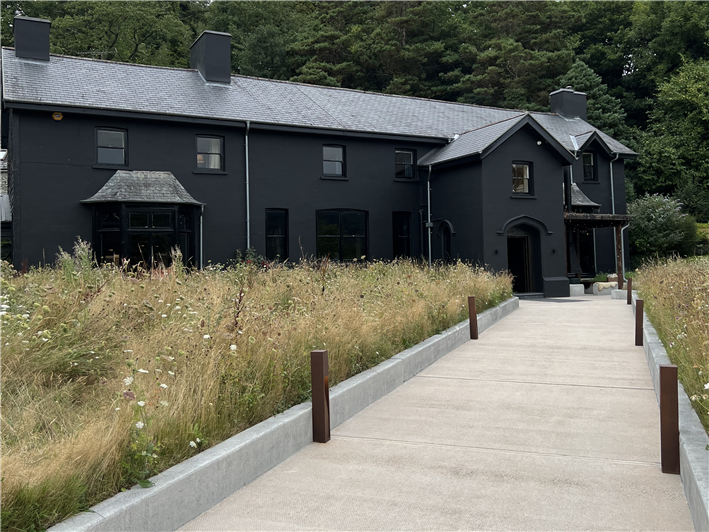



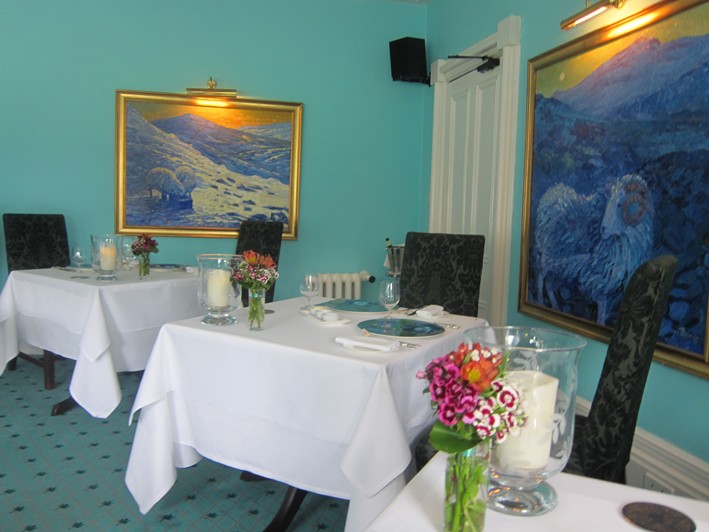
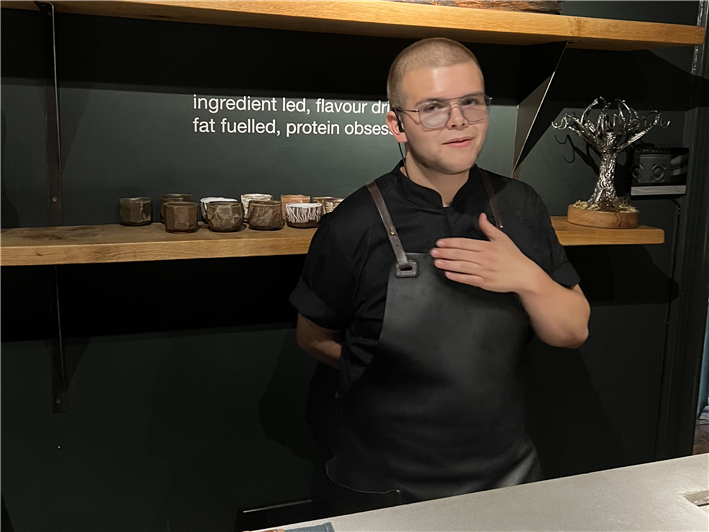

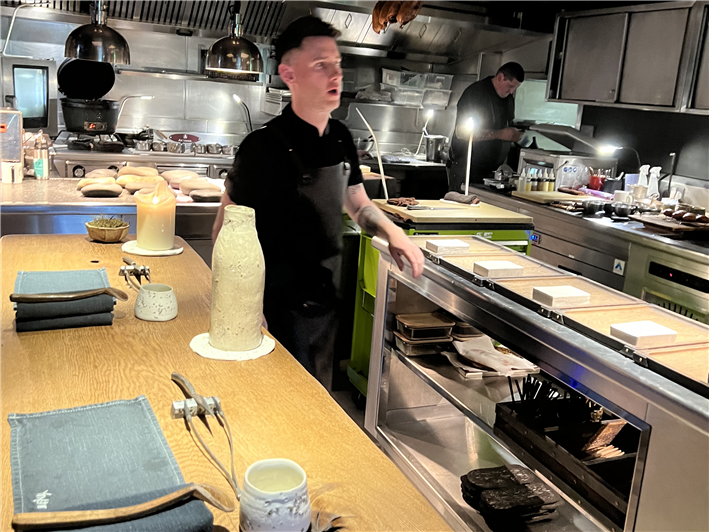


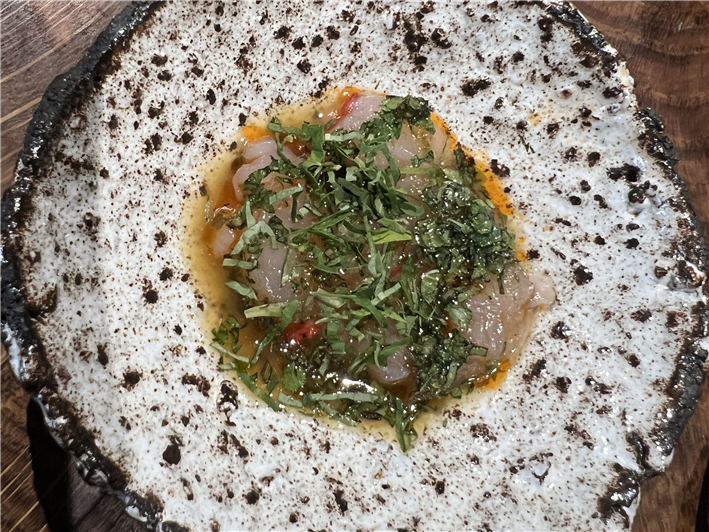

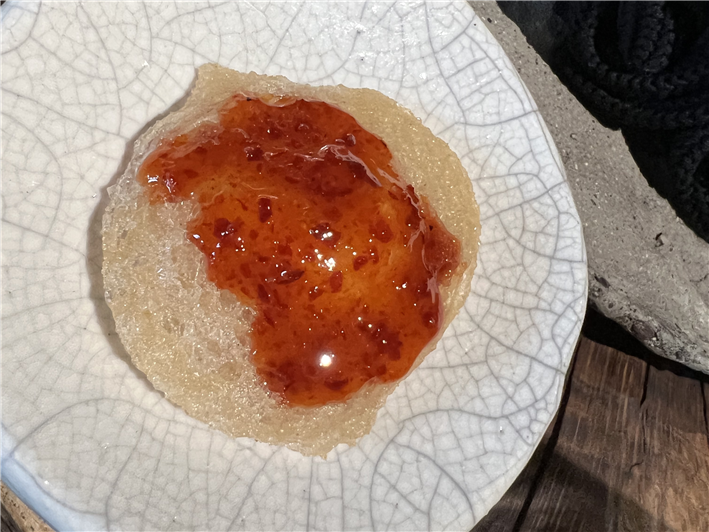
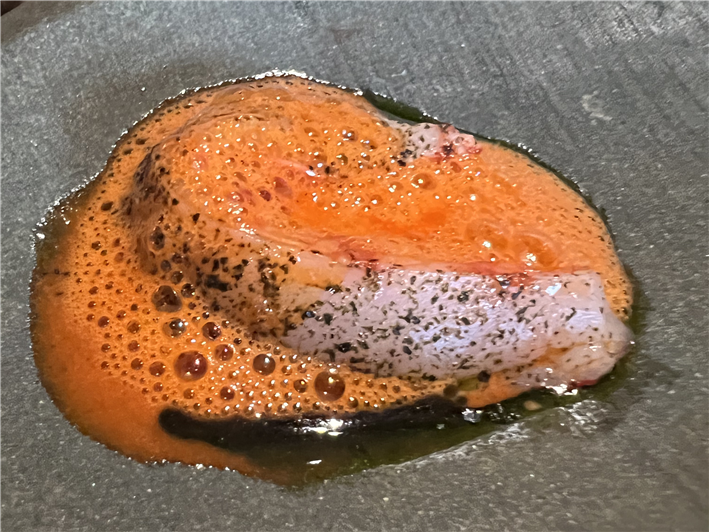
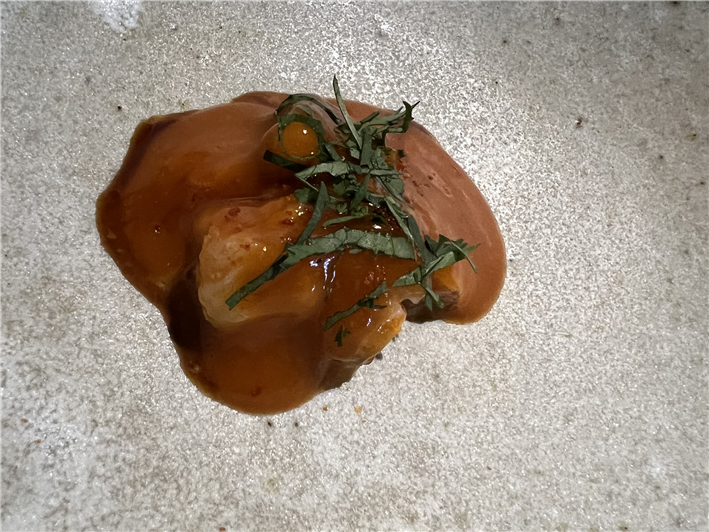
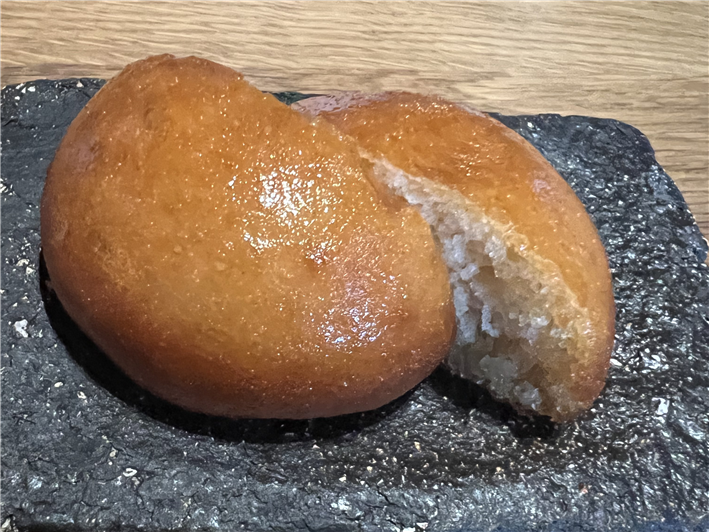
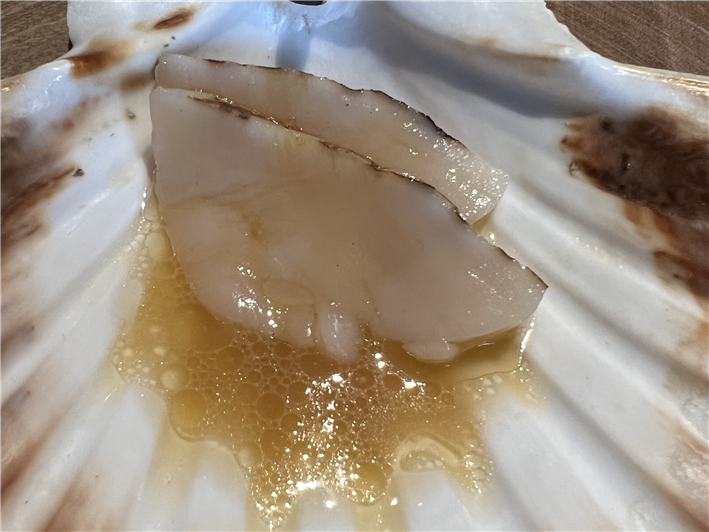
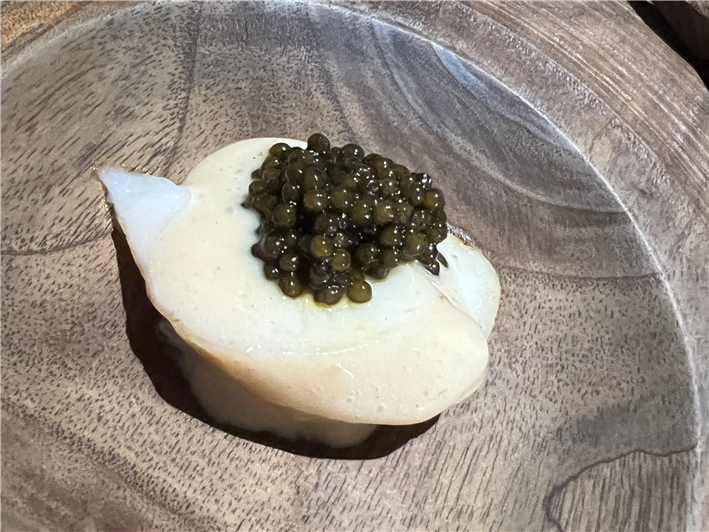

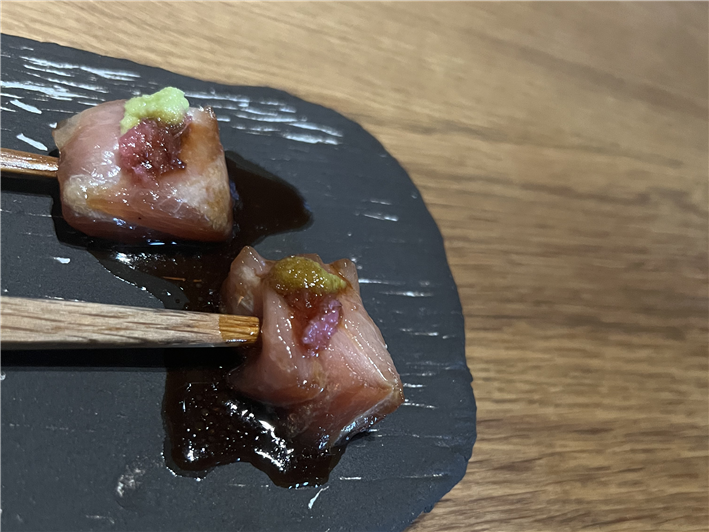
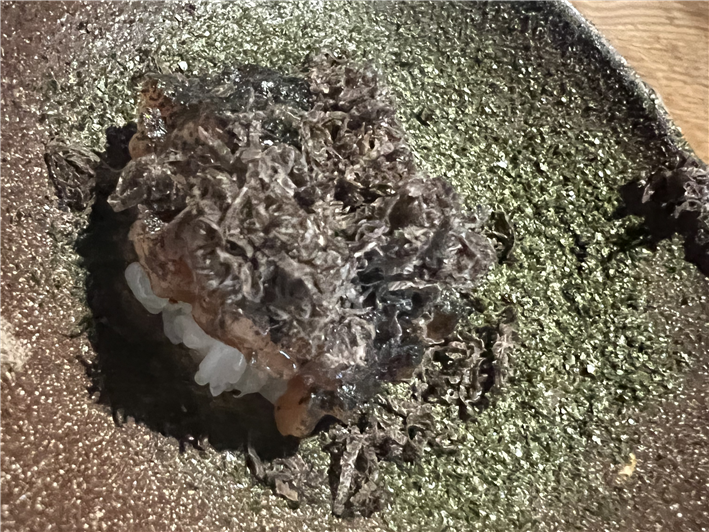
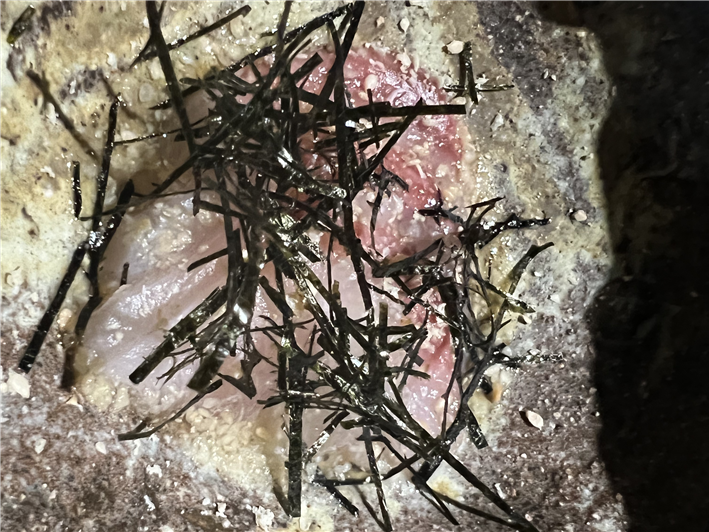
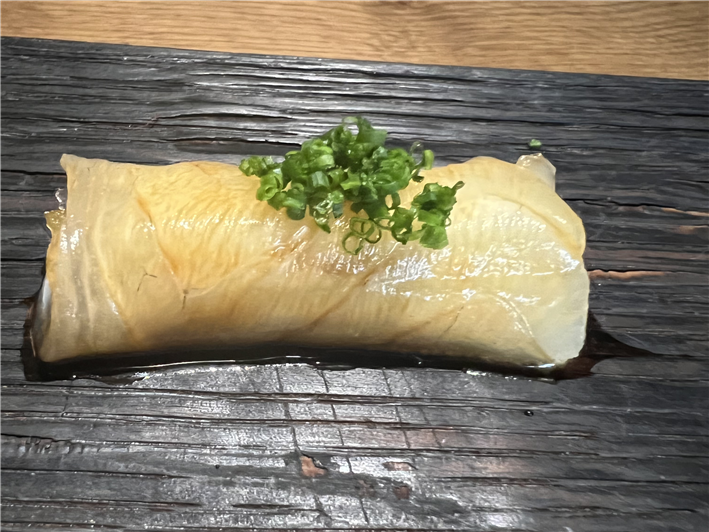

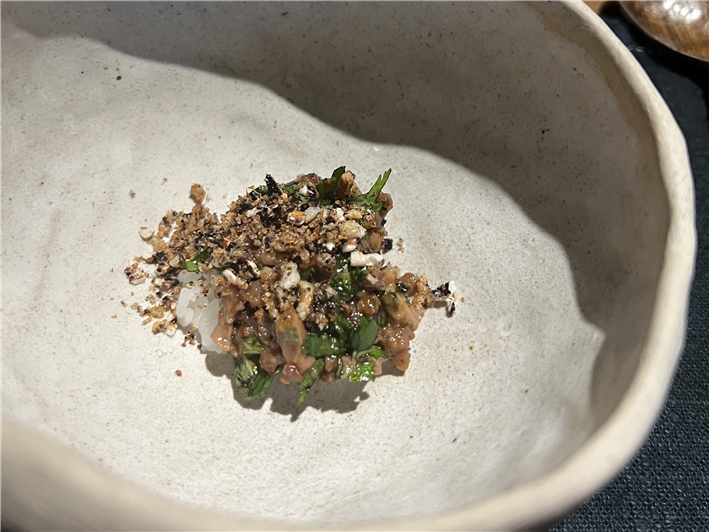
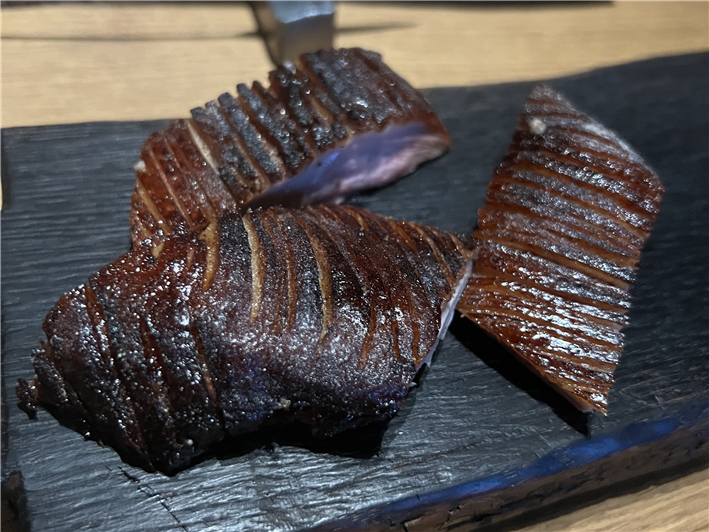
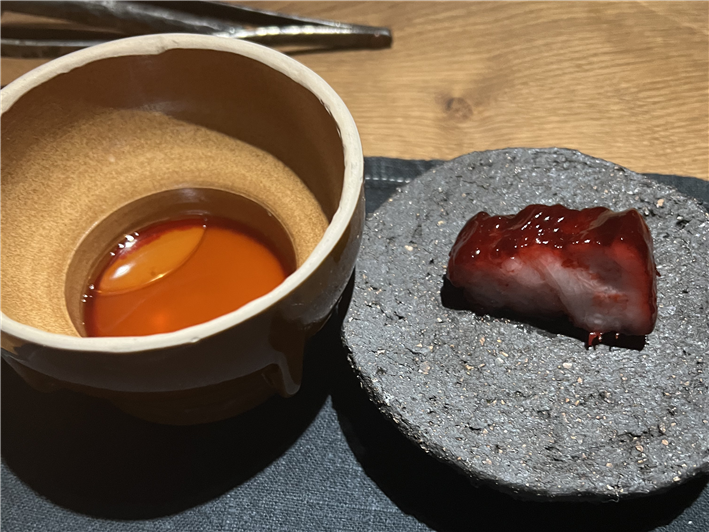
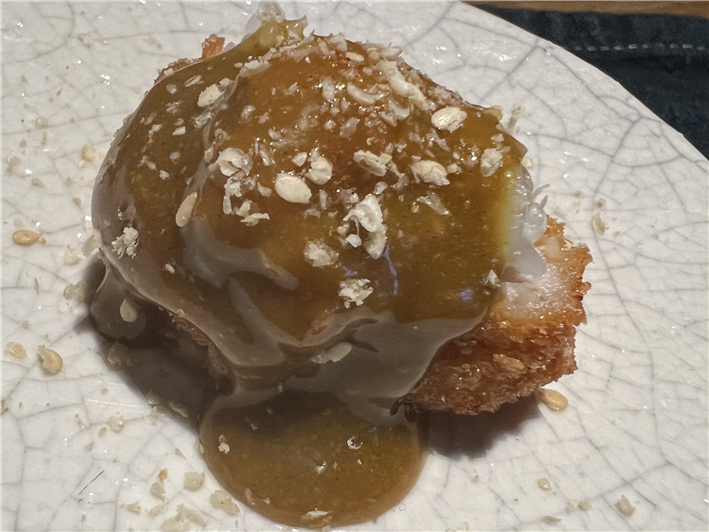
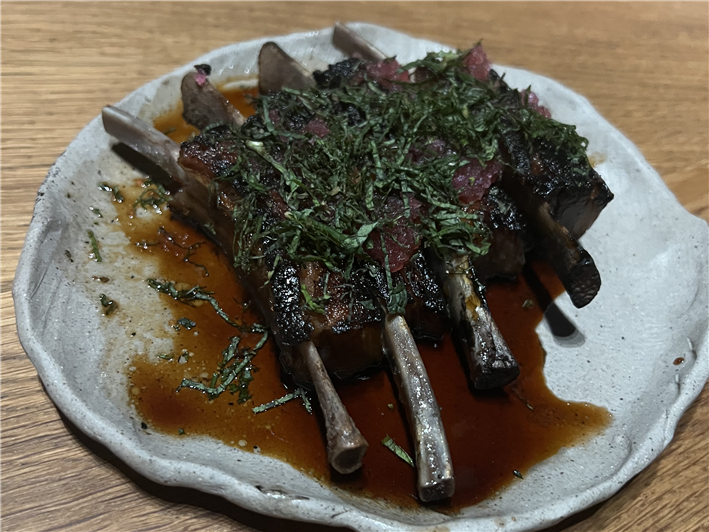

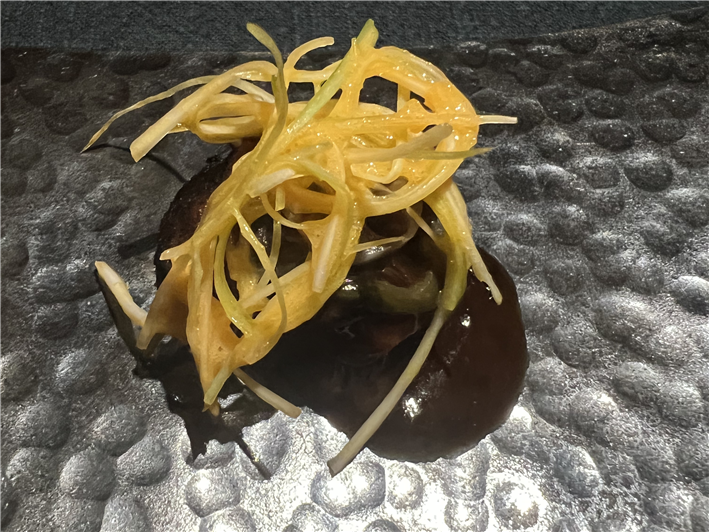

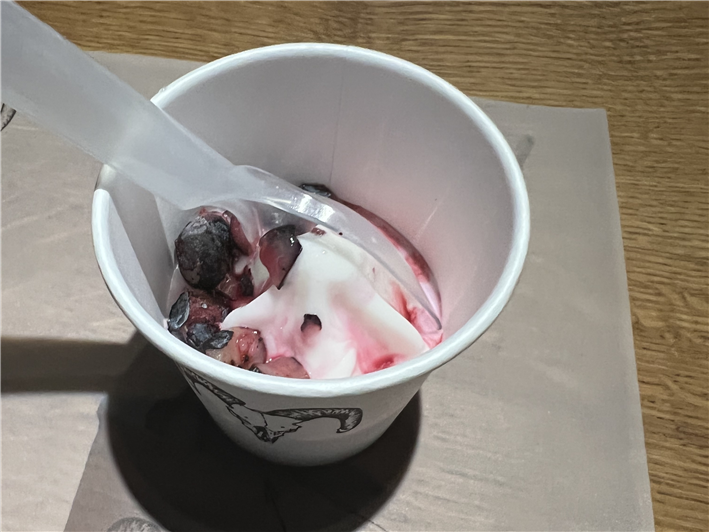

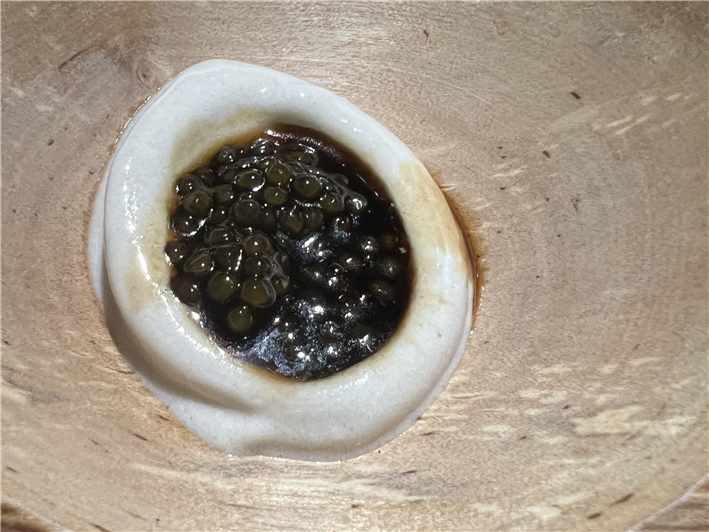

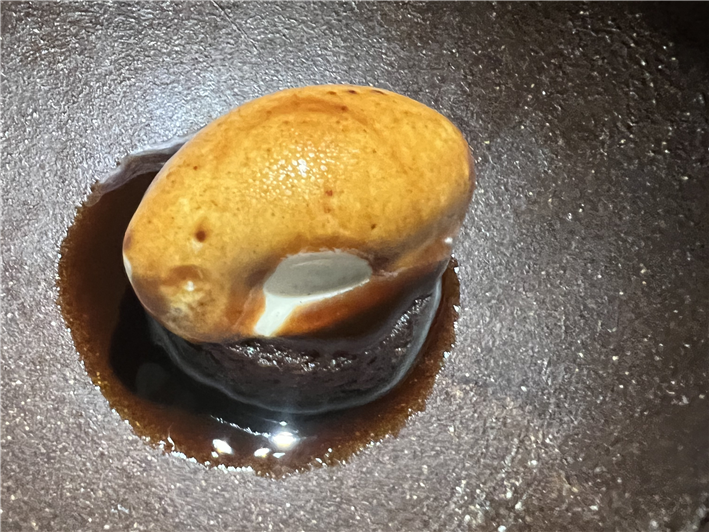
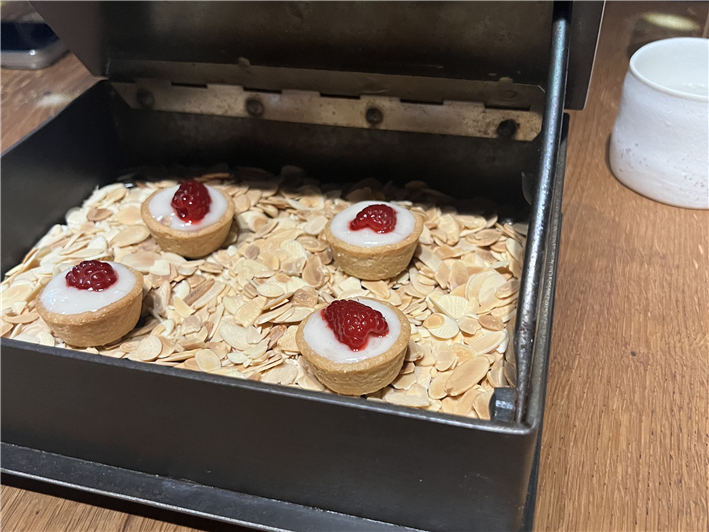
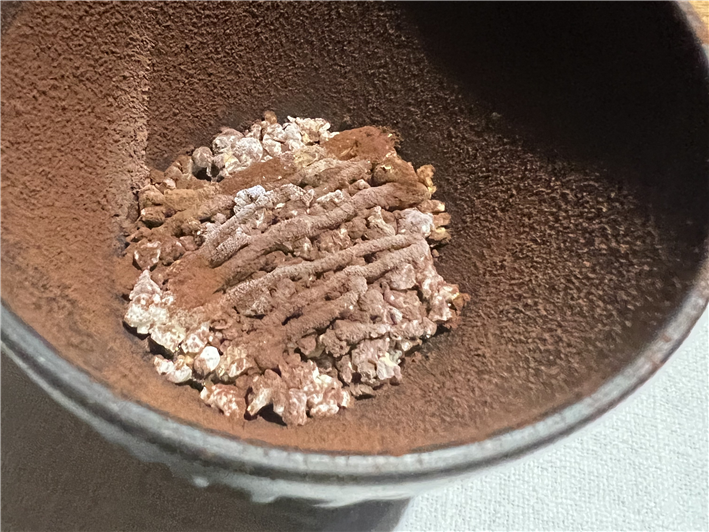
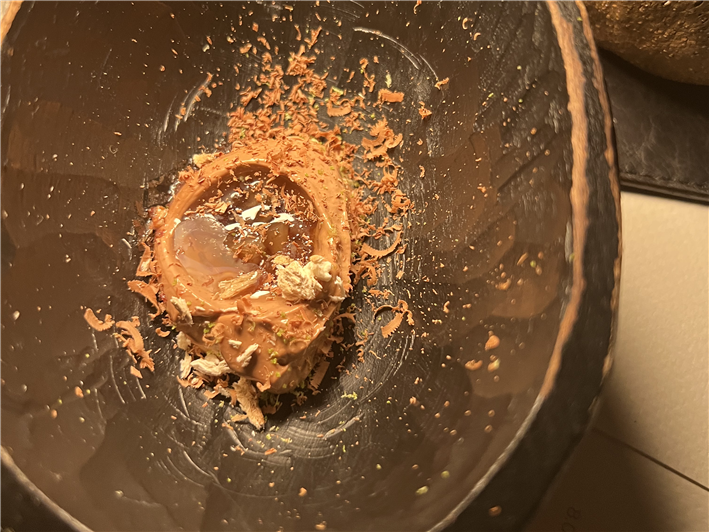
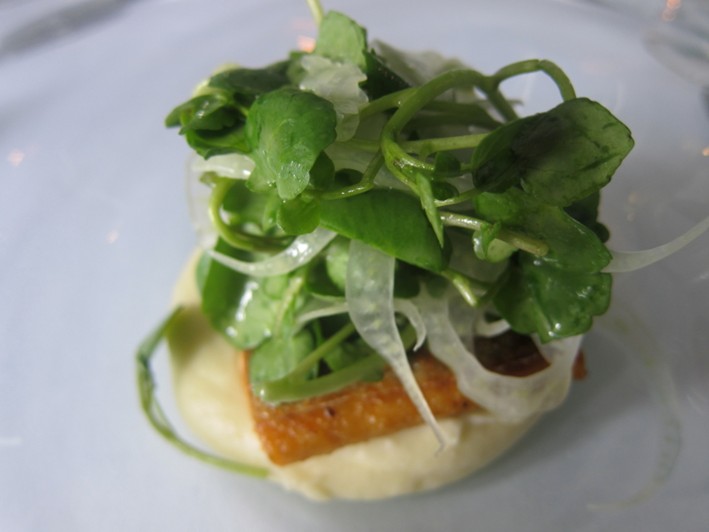
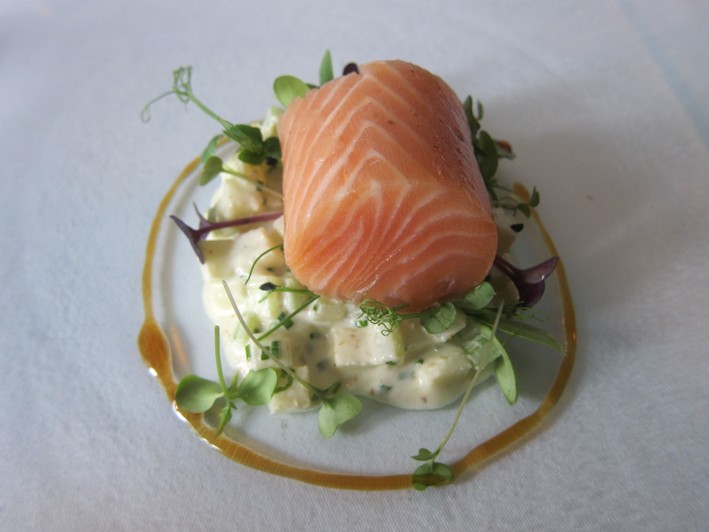
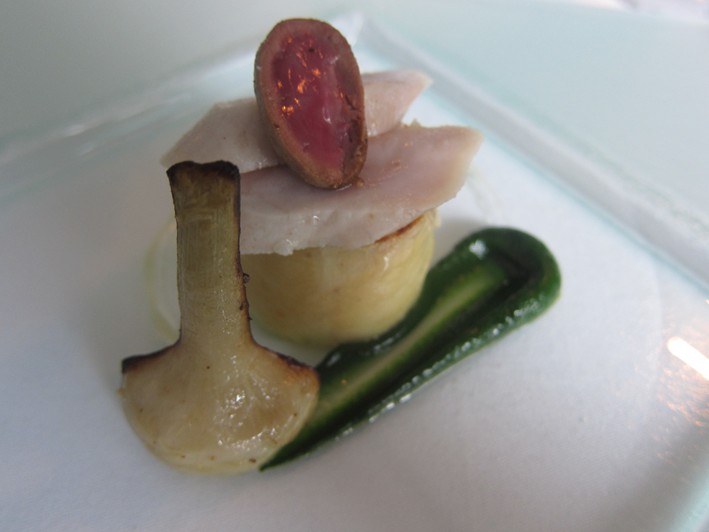
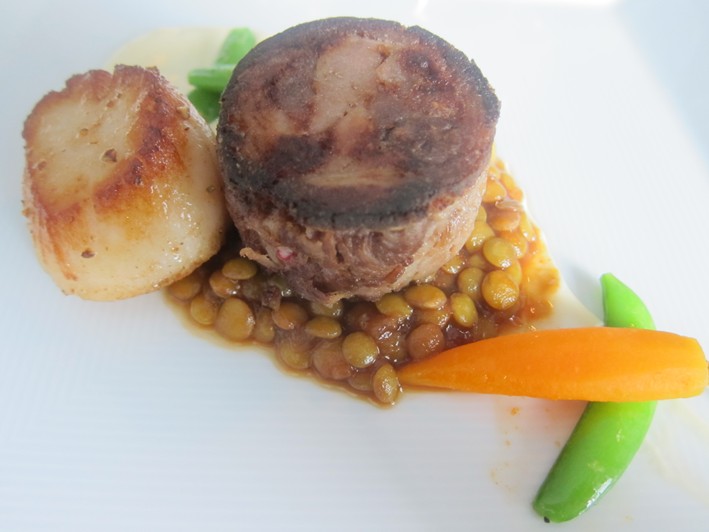
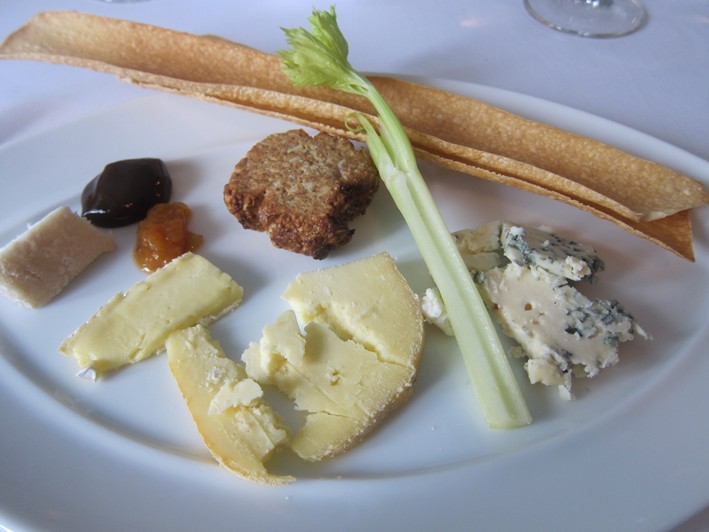
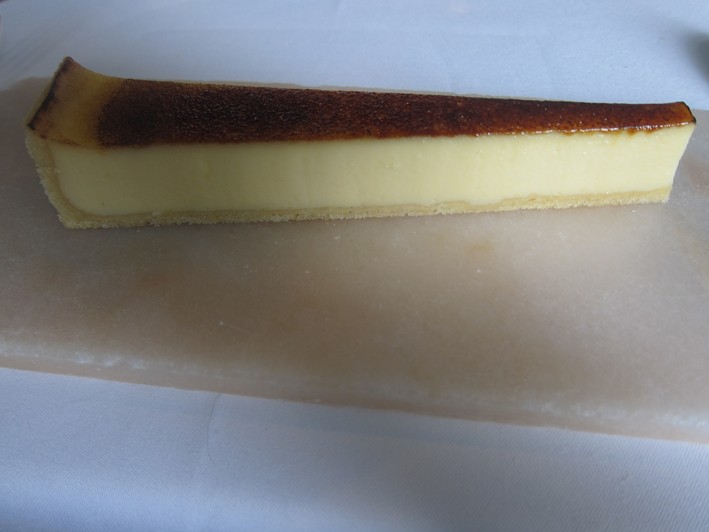
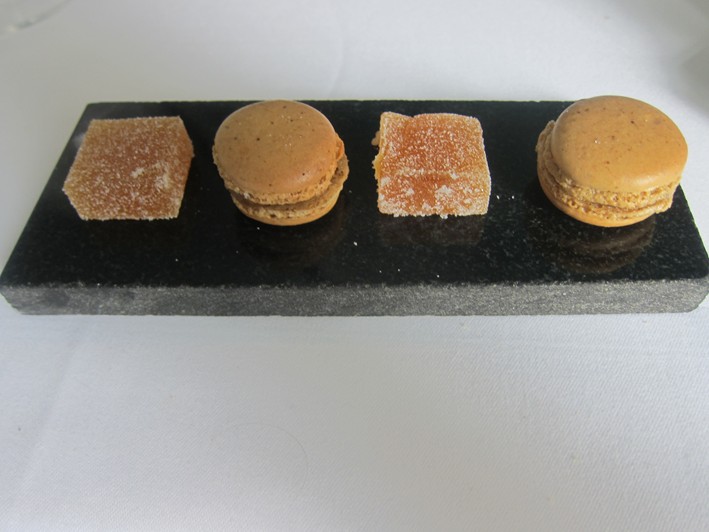

Adrian
Very interesting review. Not come across your website before. We have experienced Gareth's cooking and broadly agree. My main issue is that I simply don't have the enthusiasm or attention span, or indeed appetite, to spend several hours on a single meal. The novelty of "what's coming next?" eventually turns into "please, no more!"
DH
I can't imagine how one would feel after a meal like this. What is the wisdom behind eating a Noah's Ark worth of different animals in one sitting? I'm all for a high protein meal; I'll happily have my last meal at Casa Julian. But the thought of all those proteins and ingredients swimming together in the gut does not sound appealing.
Russ
Ynyshir is just somewhere I've never been interested in visiting. I'm convinced it's a "Balenciaga" style experiment to see how much he can get away with charging. Judging by your review, it's "unique" approach is what has won it the best restaurant title, I can't imagine it beats Moor Hall as an overall experience and your scores back that up. I suspect it's no better than classic experiences like Le Gavroche either.